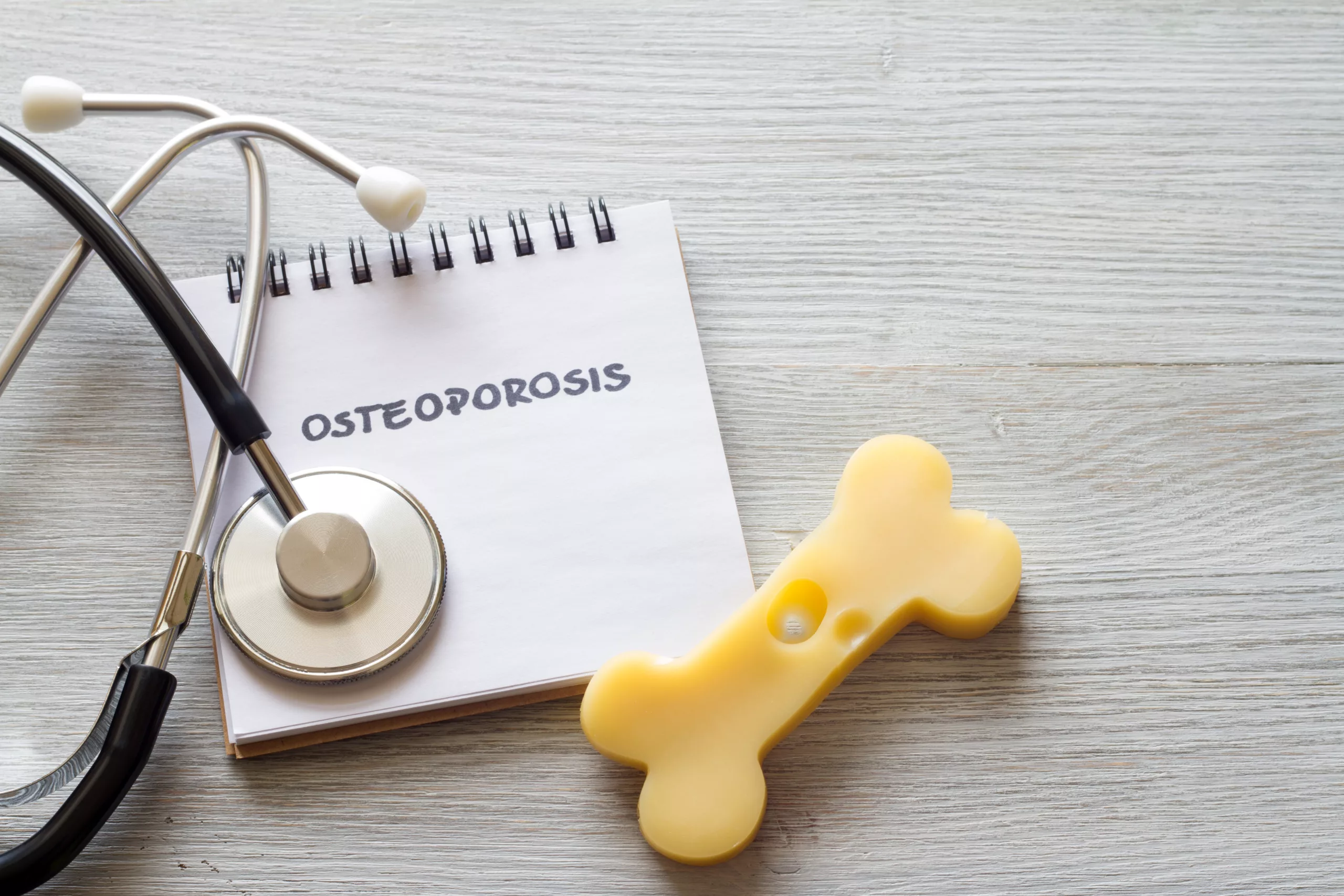
Osteoporosis is a condition in which the bones become weak and brittle enough to break easily—especially when you fall or do everyday activities like bending or exercising. It can lead to significant bone loss, along with chronic back pain, poor posture, and loss of height. This bone condition affects an estimated 10 million people in the United States aged 50 years and older—the majority of whom are women (80%).
Fortunately, osteoporosis can often be prevented with healthy lifestyle changes, including exercise and a healthy diet high in calcium and vitamin D. Knowing risk factors for this bone condition can empower you to take the right steps to keep your bones strong and avoid fractures.
Causes of Osteoporosis
Osteoporosis occurs when you lose bone mass more quickly than your body can make new bone. Several risk factors contribute to osteoporosis—some can be changed and others cannot.
Non-modifiable risk factors for osteoporosis include:
- Gender. Women are generally at higher risk than men.
- Age. Adults aged 50 years and older are at greater risk.
- Race and ethnicity. People who are white or Asian are more likely to get osteoporosis.
- Family history of osteoporosis.
- Body frame size. Women and men with smaller body frames are at high risk.
Modifiable risk factors for osteoporosis include:
- Hormone levels. Fluctuations in hormones, such as that which occur during menopause and pregnancy, can affect estrogen and other hormones that play a role in the formation and strength of bones. Thyroid problems can also lead to osteoporosis.
- Nutrition. Deficiencies in calcium and vitamin D may cause osteoporosis.
- Gastrointestinal surgery. Malabsorptive weight-loss surgeries (such as gastric bypass surgery) and any surgery in which part of the intestine is removed can lead to nutritional deficiencies, including a shortage of calcium and vitamin D.
- Medications. Certain medications have been linked to osteoporosis, including steroids, anti-seizure drugs, and GnRH agonists (used to treat female infertility and prostate cancer).
- Medical conditions. Rheumatoid arthritis, inflammatory bowel disease, and cancer are some of the many medical conditions that have been linked to osteoporosis.
- Physical activity level. People who are sedentary or who don’t exercise are often at higher risk for osteoporosis. Exercise can strengthen bones and reduce the risk of fractures.
- Alcohol use. Heavy alcohol use (defined as eight or more drinks per week for women and 15 or more drinks per week for men) can cause problems like hormone fluctuations and nutritional deficiencies that may lead to osteoporosis.
- Smoking. People who smoke cigarettes and other tobacco products are at greater risk for a wide range of health problems, including osteoporosis.
Symptoms of Osteoporosis
Osteoporosis doesn’t usually cause symptoms in its early stages. After bones have weakened, symptoms of this condition include:
- Bones that break and fracture more easily than expected
- Back pain
- Receding gums, loose teeth, and other oral health problems
- Stooped posture
- Gradual loss of height
- Weakened grip
- Weak and brittle nails that break or chip easily
Diagnosing Osteoporosis
A bone density test is the most common method used to diagnose osteoporosis. It uses an X-ray to measure the amount of calcium and other minerals in your bones to determine whether you have experienced bone loss. This test is painless and requires no preparation and usually only takes between 10 and 30 minutes.
Your doctor may recommend a bone density test if you meet risk factors for osteoporosis or are experiencing symptoms of osteoporosis, such as a loss in height and stooped posture. Based on your medical history, ask your doctor whether you should get a bone density test.
Treatments for Osteoporosis
Medications and healthy lifestyle changes are the most common treatments for osteoporosis. Your doctor can work with you to find the right treatments based on your symptoms and the severity of your condition.
Medications
Bisphosphonates, hormone therapy, and bone-building drugs are medication options for this bone condition. Bisphosphonates can slow the activity of bone loss to reduce the risk of fractures. Hormone replacement therapy can boost estrogen in women and testosterone in men to help maintain bone density. Bone-building drugs like teriparatide and abaloparatide can help stimulate the growth of new bone.
Lifestyle Changes
Making certain lifestyle changes can improve symptoms of osteoporosis and strengthen your bones so you face a lower risk of fractures. Many of the same lifestyle changes that can treat osteoporosis may also help prevent this condition.
Lifestyle changes that can treat and prevent osteoporosis include:
- Improving your nutrition. Calcium and vitamin D are essential to building strong, healthy bones. Dark leafy greens, fatty fish, and soy-based products are some of the many foods that can prevent osteoporosis. Talk to your doctor about supplementation if you need help boosting your levels of these nutrients.
- Spending more time in the sun. Sunlight can stimulate your body’s production of vitamin D.
- Exercising regularly. Weight-bearing exercises like running, climbing stairs, and brisk walking can strengthen your bones, while balance exercises like yoga and Tai Chi can reduce your risk of falling. Do a combination of these exercises on most days of the week.
- Not smoking. Avoid experimenting with tobacco products, as nicotine can be addictive. If you currently smoke, talk to your doctor about smoking cessation treatments if you need help quitting.
- Limiting your alcohol intake. Avoid heavy alcohol use and consider eliminating alcohol from your diet.
- Reviewing your medications. If you are taking any medications linked to osteoporosis, talk to your doctor about other medications or treatments that won’t increase your risk.
Make an appointment with your healthcare provider if you meet the risk factors for osteoporosis or need treatment for this condition. Your doctor can work with you to improve your bone health and help you choose a treatment that works best for you.